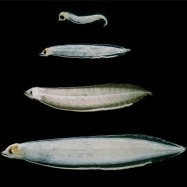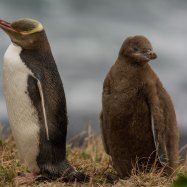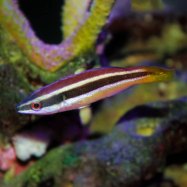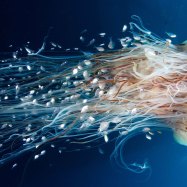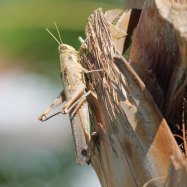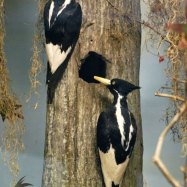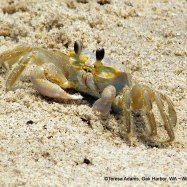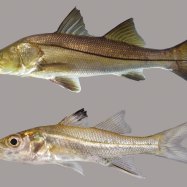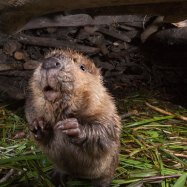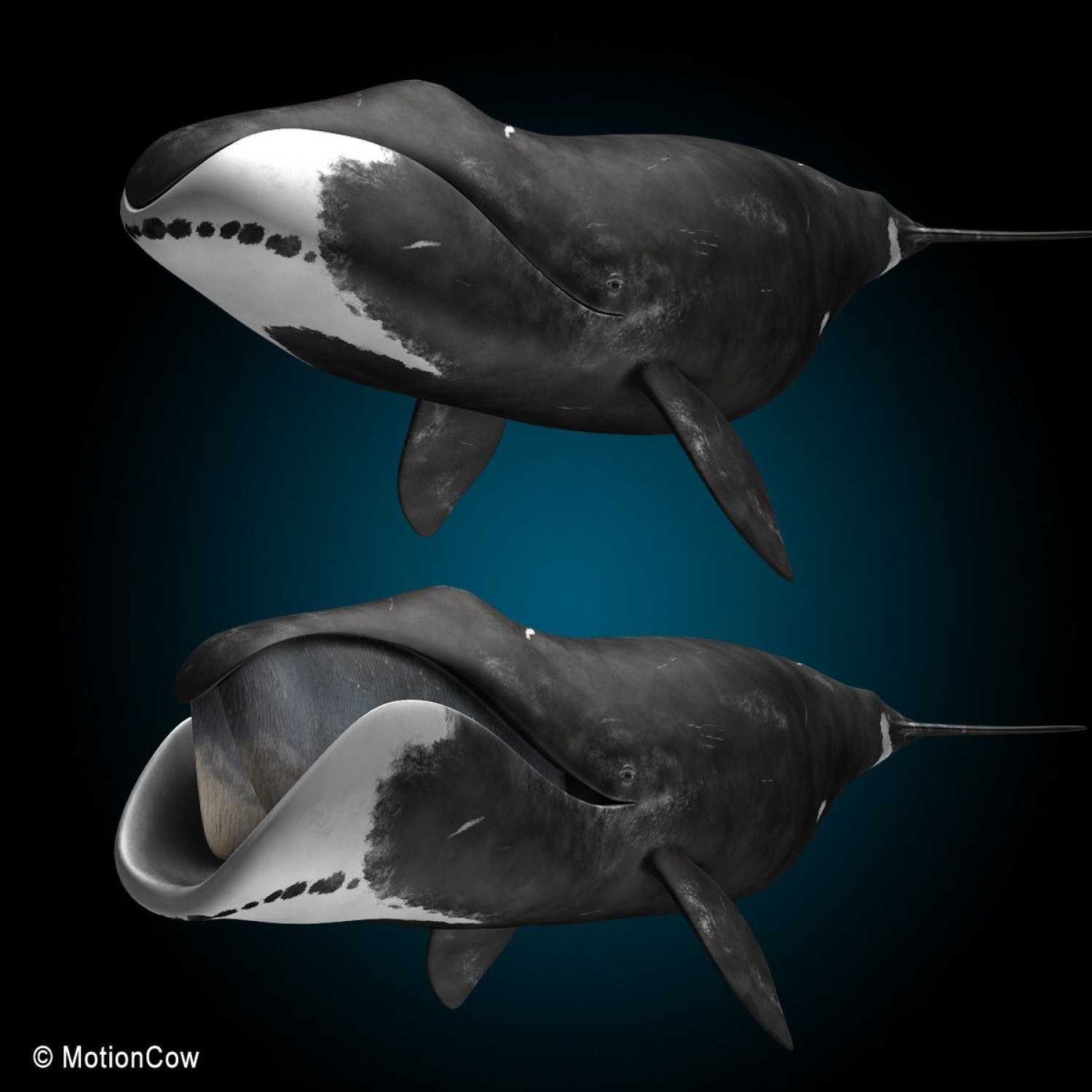
Bowhead Whale
Up to 60 feet (18 meters)
The Bowhead Whale is a fascinating animal found in the Arctic Ocean. It can grow up to 60 feet in length, making it one of the largest animals in the world. Its family, Balaenidae, is known for their robust and stocky body shape. These gentle giants are a must-see for any animal lover and a symbol of the beauty and diversity of our oceans. #BowheadWhale #ArcticOcean #Balaenidae #GentleGiants
Animal Details Summary:
Common Name: Bowhead Whale
Kingdom: Animalia
Habitat: Arctic and subarctic waters
The Majestic Bowhead Whale: The Giant of the Arctic Ocean
The Bowhead Whale, scientifically known as Balaena mysticetus, is one of the most impressive creatures in the animal kingdom. It is not just its massive size that makes this animal stand out among others, but also its remarkable ability to survive in one of the harshest environments on our planet, the Arctic Ocean.As the only baleen whale species to reside solely in the Arctic and subarctic waters, the Bowhead Whale is a true marvel of nature. From its unique physical characteristics to its feeding habits and habitat, there is so much to discover and admire about this majestic creature Bowhead Whale. So, let us embark on a journey to explore the world of the Bowhead Whale.
The Origin and Distribution of Bowhead Whales
Bowhead whales can be found in numerous countries with Arctic coastlines, including the United States, Canada, Greenland, Russia, and Norway. However, their distribution is primarily concentrated in the Arctic Ocean. These impressive creatures migrate between the Arctic and subarctic regions, following the movement of ice and their food sources.Interestingly, Bowhead whales are believed to have a lifespan of over 200 years, making them one of the longest-living mammals on Earth. This exceptional longevity has allowed them to roam the Arctic Ocean for centuries, adapting to the changing environment and evolving into the magnificent animals we know today.
The Physical Appearance of Bowhead Whales
The Bowhead Whale is undoubtedly one of the largest living animals on our planet. With an average length of 50-60 feet (15-18 meters) and a weight of up to 100,000 pounds (45,360 kilograms), these giant creatures are hard to miss. But what truly sets Bowhead Whales apart is their robust and stocky body shape, which is perfectly adapted to their icy habitat Barramundi Fish.Their black or dark gray skin is thick and tough, providing insulation against the frigid waters of the Arctic. They also have large, triangular-shaped heads, which make up about one-third of their body length. This distinctive feature is where the Bowhead Whale gets its name, as their broad and round heads resemble those of a traditional hunting bow.
One of the most striking characteristics of Bowhead Whales is their snowy white patches that cover their bodies. These patches are a result of their color-changing skin, which darkens with age due to an accumulation of scars and barnacles from living in Arctic waters.
Habitat and Adaptations of Bowhead Whales
As mentioned earlier, Bowhead Whales reside exclusively in Arctic and subarctic waters. However, unlike other whales, they are well adapted to living in the ice-covered regions. Their bony skulls and powerful bodies enable them to break through thick layers of sea ice, allowing them to surface for air and navigate through their icy domain.Their unique physical features, such as their thick blubber, also help them withstand the extreme cold. Bowhead whales have one of the thickest blubber layers among marine mammals, measuring up to 20 inches (50 centimeters) in some individuals. This layer of fat acts as insulation, keeping their body temperature warm in the freezing waters.
Feeding Habits of Bowhead Whales
Bowhead whales are filter feeders, meaning they consume various small organisms such as plankton, krill, and small fish by filtering them through their baleen plates. These baleen plates, made of keratin (the same material as human hair and nails), are extensively long and fringed, allowing the Bowhead Whale to strain its food from the seawater.Despite being filter feeders, these whales have a hearty appetite, consuming up to 2,200 pounds (1,000 kilograms) of food per day. During summer, when the Arctic ice retreats and plankton blooms occur, Bowhead Whales gather in large numbers to feed on these concentrated food sources.
The Social Behavior of Bowhead Whales
Bowhead Whales are generally known as solitary creatures, but they do form social groups or pods when migrating and during feeding. These groups can consist of up to 60 individuals and are believed to have a matriarchal hierarchy, where the oldest female leads the pod.These whales are also known for their intricate communication methods, which involve vocalizations such as grunts, moans, and high-pitched songs. Researchers have found that these songs can last up to 30 minutes, and each pod has its unique vocalizations, possibly used for identification and communication.
Conservation Status of Bowhead Whales
The International Union for Conservation of Nature (IUCN) lists Bowhead Whales as "Least Concern," meaning they are not currently considered to be at risk of extinction. However, this conservation status was not always the case.In the past, Bowhead Whales were heavily hunted for their meat, blubber, and baleen plates, leading to a sharp decline in their population. These hunting practices have largely been restricted and regulated, contributing to the gradual recovery of this species. Nevertheless, climate change and the loss of sea ice continue to pose a threat to their survival.
The Importance of Bowhead Whales in the Arctic Ecosystem
Bowhead Whales play a crucial role in maintaining the balance of the Arctic ecosystem. As filter feeders, they help regulate the population of their prey, ensuring a healthy and sustainable marine ecosystem. They also contribute to nutrient mixing and recycling, which supports the growth and survival of other species in the Arctic.Moreover, the presence of Bowhead Whales in the Arctic serves as an indicator of the overall health of the ocean. Their long lifespan and slow reproductive rate make them vulnerable to changes in their environment, making it crucial for scientists to monitor their population and health.
Conclusion
In conclusion, the Bowhead Whale is an incredible animal with unique physical features, impressive adaptations, and a vital role in the Arctic ecosystem. Their sheer size and resilience in such harsh conditions make them a true representation of the strength and wonder of nature.Despite facing various threats, the population of Bowhead Whales continues to grow, thanks to conservation efforts and stricter regulations. We must continue to protect and preserve these magnificent creatures for generations to come, reminding us of the endless possibilities of survival and adaptation in this ever-changing world.

Bowhead Whale
Animal Details Bowhead Whale - Scientific Name: Balaena mysticetus
- Category: Animals B
- Scientific Name: Balaena mysticetus
- Common Name: Bowhead Whale
- Kingdom: Animalia
- Phylum: Chordata
- Class: Mammalia
- Order: Cetacea
- Family: Balaenidae
- Habitat: Arctic and subarctic waters
- Feeding Method: Filter feeder
- Geographical Distribution: Arctic and subarctic regions
- Country of Origin: Numerous countries with Arctic coastline
- Location: Arctic Ocean
- Animal Coloration: Black or dark gray with white patches
- Body Shape: Robust and stocky
- Length: Up to 60 feet (18 meters)
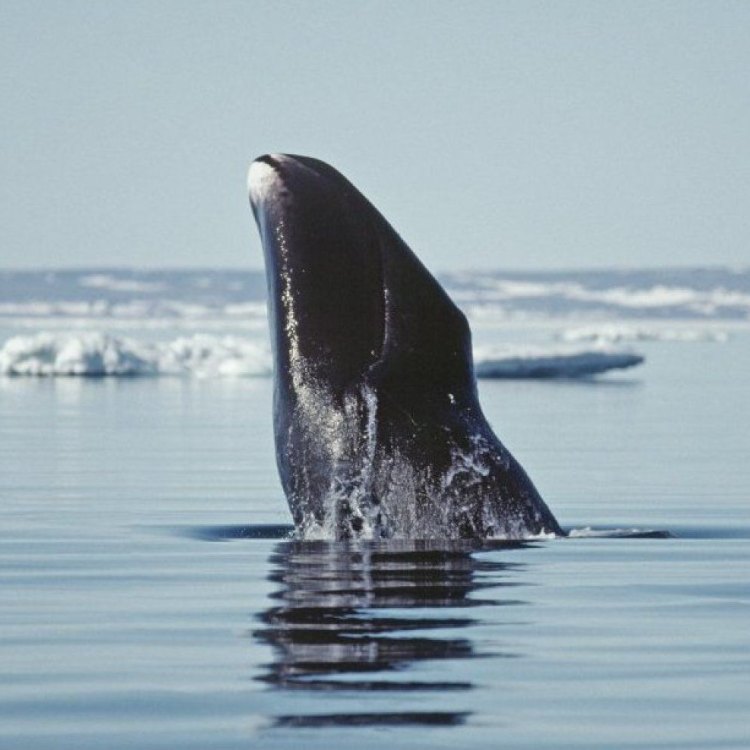
Bowhead Whale
- Adult Size: Adult males: 50-60 feet (15-18 meters) in length Adult females: 50-55 feet (15-16.7 meters) in length
- Average Lifespan: Estimated to be over 100 years
- Reproduction: Sexual
- Reproductive Behavior: Mating occurs in late winter or early spring
- Sound or Call: Known for complex and varied songs
- Migration Pattern: Some populations undertake long migrations
- Social Groups: Usually solitary or travel in small groups
- Behavior: Gentle and slow-moving
- Threats: Hunting (commercial and subsistence), climate change, pollution, habitat degradation
- Conservation Status: Least Concern
- Impact on Ecosystem: Important role in maintaining Arctic food chains
- Human Use: Historically hunted by indigenous communities
- Distinctive Features: Bow-shaped lower jaw, massive head, and bumpy appearance
- Interesting Facts: One of the longest-living mammals, has the largest mouth of any animal, possesses a thick layer of blubber for insulation
- Predator: No natural predators
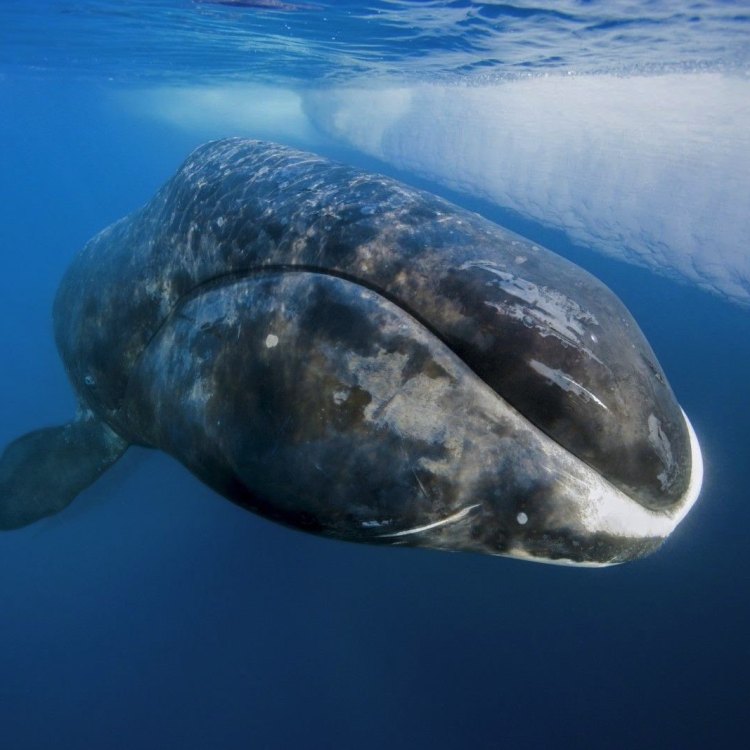
Balaena mysticetus
The Gentle Giant of the Arctic: The Fascinating World of the Bowhead Whale
The Arctic may conjure up images of endless snow and ice, devoid of any living beings. But hidden beneath the freezing waters, a fascinating creature quietly prowls, one that is often overlooked in the media but plays a crucial role in maintaining the delicate balance of the ecosystem. The Bowhead Whale, also known as the Balaena mysticetus, is a majestic and enigmatic creature that captures the imagination with its remarkable features and behavior. In this article, we will take a deep dive into the world of this magnificent creature and discover its unique characteristics, its impact on the environment, and the challenges it faces in today's world PeaceOfAnimals.Com.Size and Reproduction
When it comes to size, the Bowhead Whale is an absolute behemoth, earning the title of the second largest animal in the world, after its distant cousin, the Blue Whale. Adult males can reach an astonishing length of 50-60 feet (15-18 meters), while females reach a slightly smaller range of 50-55 feet (15-16.7 meters). To put that into perspective, that is almost the length of two school buses lined up end to end! And these massive creatures can weigh up to 100,000 lbs, making them one of the heaviest animals on the planet.
But perhaps the most remarkable trait of the Bowhead Whale is its longevity. It is estimated that these gentle giants can live for over 100 years, making them one of the longest-living mammals on Earth. This is quite an impressive feat, considering their size and the harsh conditions they have to endure in the Arctic. So what is the secret to their long lifespan? Scientists believe that it is due to their slow metabolism and their ability to store large amounts of blubber, which helps them survive in freezing temperatures.
Reproductive Behavior and Call
The Bowhead Whale is a sexual species, with mating patterns that are typically observed in other whale species Bluefish. Mating occurs in late winter or early spring, and females give birth to a single calf every two to three years. The mother-calf bond is strong, with calves staying with their mothers for one to two years before venturing out on their own.
But what sets the Bowhead Whale apart from other species is its distinctive songs and calls. These gentle creatures are known for their complex and varied songs, which can last for several minutes and can be heard from miles away. Interestingly, scientists have observed different dialects of these songs, varying among populations, suggesting a form of communication between different groups of Bowhead Whales.
Migration Pattern and Social Groups
While some populations of Bowhead Whales are known to undertake long migrations, not much is known about their migration pattern. This is due to the remote areas they inhabit, making it difficult for scientists to track their movements. However, it is believed that they migrate to warmer waters during the winter for breeding and give birth in the spring before returning to the Arctic.
In terms of social groups, Bowhead Whales are usually solitary animals, only coming together for mating or traveling in small groups of 2-4 individuals. This behavior is believed to be a survival tactic, as living in large groups would make them more vulnerable to predators.
Behavior and Threats
Despite their enormous size, Bowhead Whales are known for their gentle demeanor and slow-moving nature. This gentle behavior has earned them the nickname "the right whale," as they were once believed to be the "right" species to hunt. Unfortunately, their docile nature has made them vulnerable to human activities, leading to serious threats to their population.
Unsustainable commercial and subsistence hunting has been the biggest threat to Bowhead Whales, with their population decreasing rapidly in the past century. However, thanks to conservation efforts and strict regulations, their population has shown signs of recovery, and they are currently listed as Least Concern by the International Union for Conservation of Nature (IUCN). Climate change, pollution, and habitat degradation are also major threats to these creatures and their Arctic ecosystem, as they depend heavily on the sea ice for survival.
Impact on the Ecosystem
The Bowhead Whale plays a crucial role in maintaining the delicate balance of the Arctic ecosystem. As filter feeders, these gentle giants consume large amounts of plankton and krill, thus preventing overpopulation of these tiny organisms. This, in turn, affects the entire food chain, with other species like fish and seals depending on these tiny organisms for survival. Furthermore, their carcasses provide a vital source of food for scavengers and contribute to the organic matter in the water, supporting the growth of plants and other marine creatures.
Human Use and Distinctive Features
For centuries, indigenous communities in the Arctic have relied on the Bowhead Whale for survival. The Inuit and Yup'ik people, in particular, have a deep connection with these animals and have traditionally hunted them for their meat, oil, and blubber. However, in recent years, these communities have adopted sustainable hunting practices to preserve the Bowhead Whale population and its important cultural significance.
One of the most distinctive features of the Bowhead Whale is its bow-shaped lower jaw, which gives it its name. This unique jaw allows them to break through ice and navigate through the harsh Arctic waters. They also have a massive head, compared to their body size, giving them a bumpy appearance. But perhaps the most astonishing feature is their mouth, which can stretch up to 17 feet wide and holds the record for being the largest mouth of any animal.
Interesting Facts and Conclusion
As we've explored the fascinating world of the Bowhead Whale, here are some interesting facts that showcase the remarkable nature of these creatures.
- Along with the longest lifespan, Bowhead Whales also hold the record for the longest baleen of any whale species.
- Their blubber layer can be up to 2 feet thick, providing them with insulation against the freezing Arctic waters.
- Bowhead Whales have the largest brains of any animal, weighing up to 15 lbs.
- They can swim at speeds of up to 3 mph, making them one of the slowest swimmers among whale species.
In conclusion, the Bowhead Whale may not be as well-known as other whales, but they hold a special place in the Arctic ecosystem. These gentle giants have faced numerous threats, but thanks to conservation efforts and sustainable practices, their population is gradually recovering. As we continue to learn more about this enigmatic species, let us remember the vital role they play in maintaining the health and balance of our planet's delicate ecosystem.
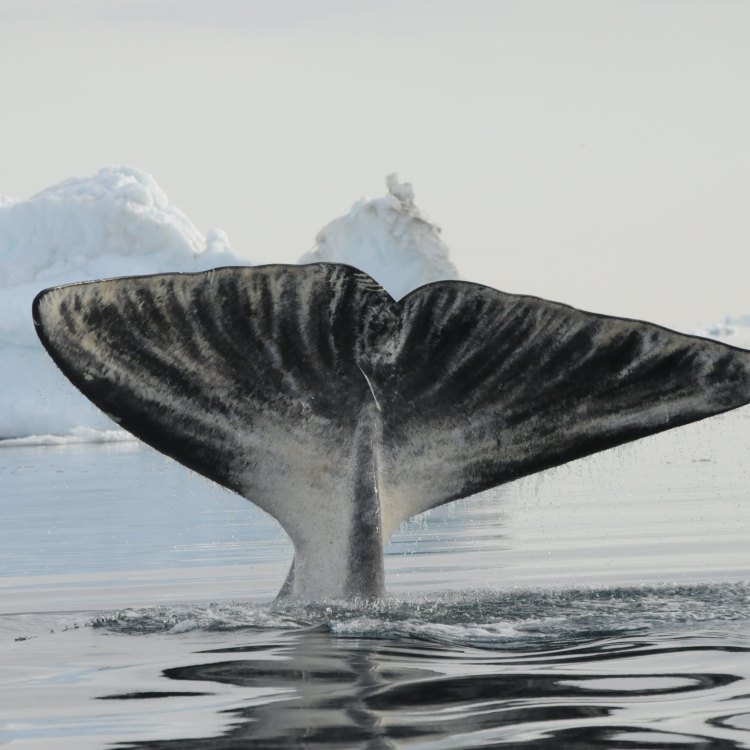
The Majestic Bowhead Whale: The Giant of the Arctic Ocean
Disclaimer: The content provided is for informational purposes only. We cannot guarantee the accuracy of the information on this page 100%. All information provided here may change without prior notice.

